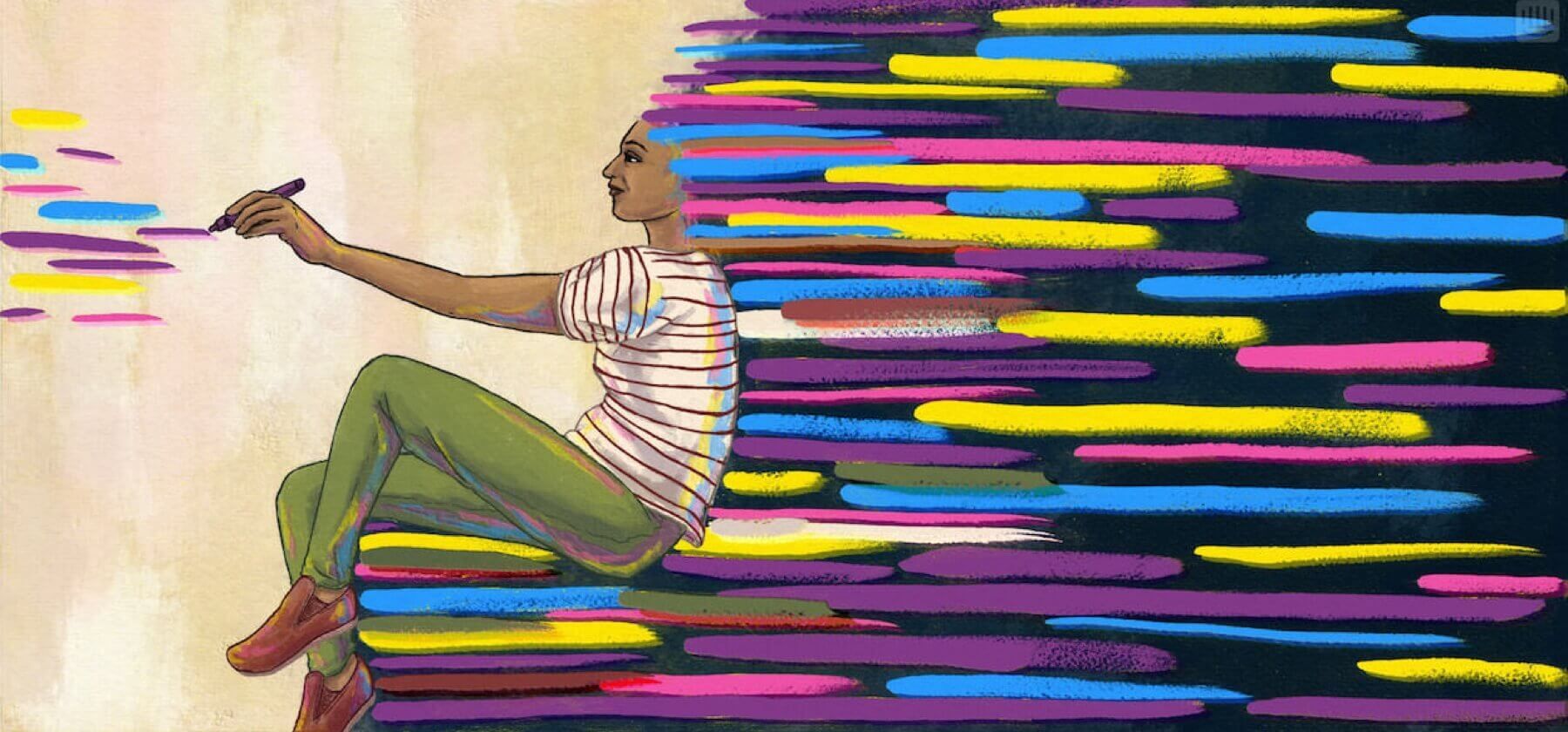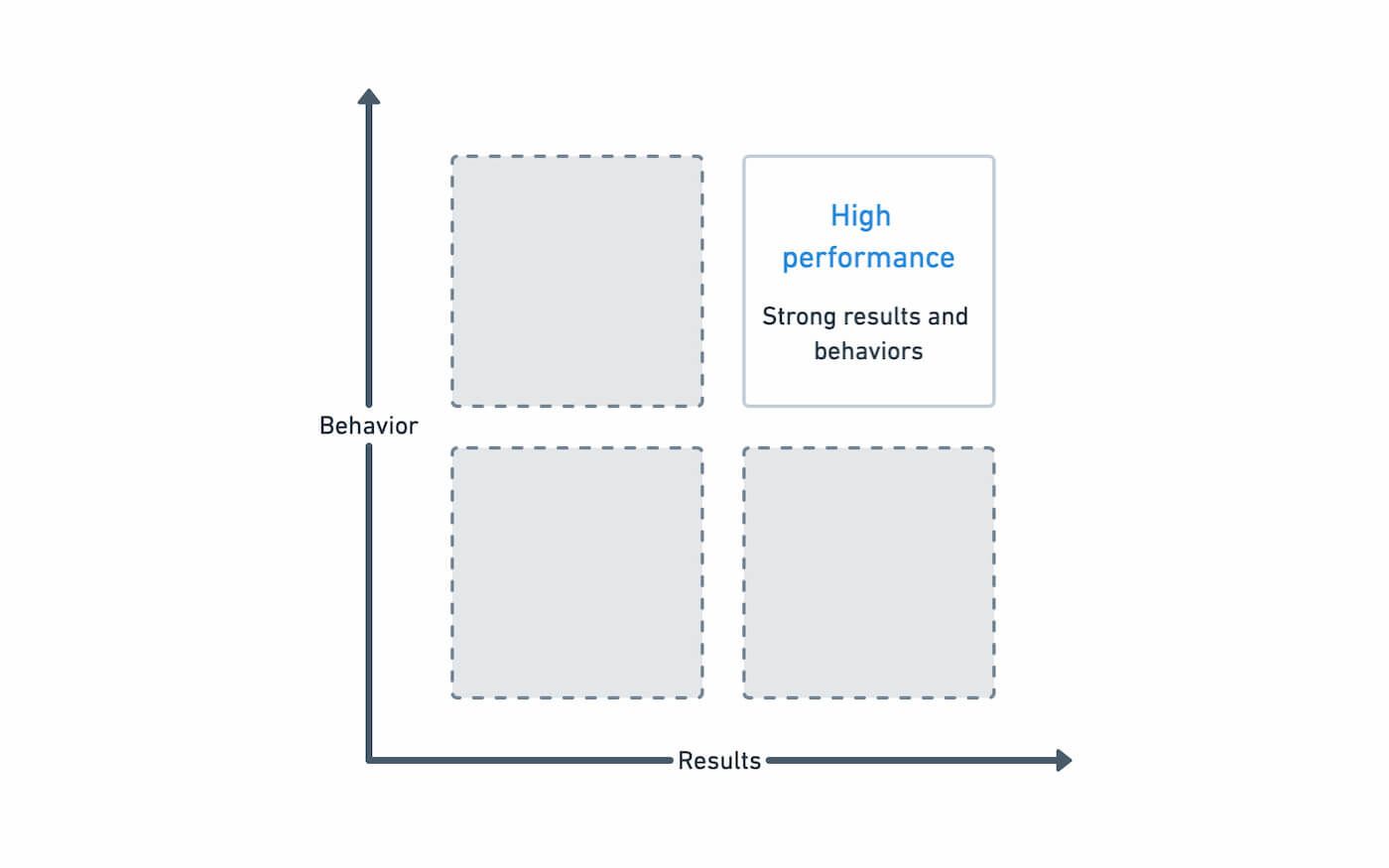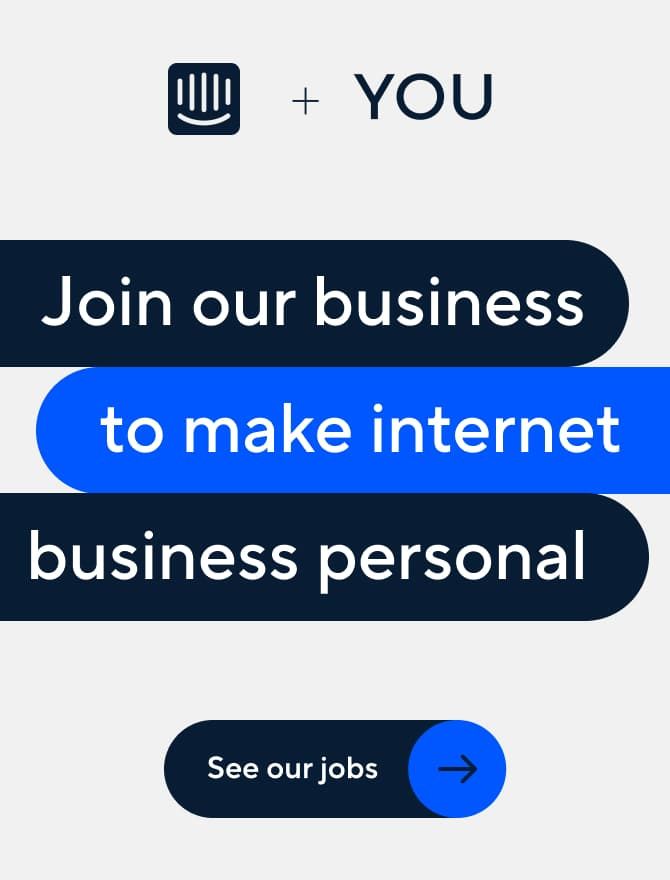
How to have impact as a designer
Main illustration: Michelle Kondrich
A lot of the books, articles and discourse around design focuses on the process of design work (the things designers do) and the output of design work (the things designers deliver).
We often spend less time thinking and talking about the impact of design work – that is, what does our work truly achieve and change beyond just the artefact that it delivers. We believe that thinking deeply about how designers can have maximum impact is the difference between a good designer and a world class one, and it’s something that we’ve been talking about a bunch lately in Intercom.
Recently, we shared an internal memo with our team detailing our philosophy around how to have impact as a designer. It’s something that has since helped managers and ICs get clear and stay aligned around what impact looks like and how to achieve it, and it applies broadly to product designers, content designers, information architects, visual designers, even researchers. It consists of answers to just four simple questions, and we’ve found it so valuable that we’re delighted to share it below.
Question 1: What does having impact as a designer mean?
Before we talk about impact, let’s zoom out and talk about performance more broadly.
Performance is measured on two axes: behavior and results.

Behaviors are assessed based on your ability to successfully work with others and on your demonstration of leadership in your role.
Successfully working with others means:
- You commit to doing things and then follow through.
- You bring people from multiple disciplines together to drive projects forward.
- You are organized, methodical and precise.
- You constantly search for opportunities to be impactful.
- Your communication is articulate and compelling.
- You are all-in and a team player.
- You learn, understand and live our company values and our R&D Principles.
Leadership can be demonstrated through:
- Project leadership: For instance, conceptualizing and realizing new and innovative product ideas.
- Team leadership: For example, upleveling the design org’s processes through DesignOps.
- Thought leadership: For example, sharing knowledge and ideas around emerging concepts like bots and automation, in order to help teams understand the space and build better product.
Results are assessed based on the quality of your work and the impact of your work.
High quality design work:
- Is valuable to customers and solves the intended problem.
- Is easy to use and understandable.
- Is well crafted and polished.
High impact design work:
- Contributes tangibly to hitting team or company goals.
- Is recognized broadly as being valuable.
- Drives positive change.
Quality and impact are connected. Consider this – if a designer believes their work to be high quality, but the work is not high impact, then can it truly be said to be high quality?
Our belief is that the answer to this is no. This is because for a design to be high quality it must solve the intended problem, and we should only work on problems that are impactful to solve, so therefore for a design to be high quality, it must also be high impact.
All of this is to say that doing high impact design work is central to being a high-performing designer.
 Question 2: How can a designer have impact?
Question 2: How can a designer have impact?
There are three types of work that a designer commonly does:
- Product work: For example, designing a new feature, like Custom Bots.
- Process work: For example, contributing to our team guidelines, like our Principles.
- People work: For example, supporting a teammate by providing mentoring or giving feedback.
Regardless of the type of work, all work results in:
- An output: This is what work is delivered.
- An outcome: This is what the work achieves.
- An impact: This is what changes as a result of the work.
As a designer, it’s important to be able to draw a connection between the work that you do (the “what?”) and the impact of that work (the “so what?”), to ensure that you have made a meaningful and positive change.
All of this can be translated into a simple framework (based on the Kellogg model):

Now that we’ve established this framework, we can apply it to a few examples to illustrate just a few of the many ways in which designers can have impact.
Example 1: The designer worked on a high-quality solution to a known customer problem, drove project progress, shipped it in high quality.
- Output: A new feature in Intercom
- Outcome: A top problem to be solved for the team is now closed out and the feature is delivering value to customers
- Impact: The new feature was a factor in unblocking a sales deal with a strategically important company worth $50k in revenue
Example 2: The designer wrote a blog post on design culture at Intercom.
- Output: Blog post published
- Outcome: Blog post is shared widely on Twitter and generates a lot of engagement from the design community.
- Impact: Intercoms employer brand is improved and becomes a more attractive place for designers to work.
Example 3: The designer autonomously conducted a design review of the App Store, identified a number of quick wins, worked with the team to ship improvements during wiggle week.
- Output: Changes to the App Store
- Outcome: A number of problems/opportunities that would otherwise have gone unidentified have been addressed and team KPIs have improved as a result
- Impact: App installation rates have improved by 25%
Example 4: The designer organized Figma training for designers.
- Output: A series of lunch and learns.
- Outcome: Designers are upskilled in using Figma’s advanced features.
- Impact: Designers now produce mockups more quickly and efficiently.
Question 3: How can a designer understand the level of impact of their work?
Impact can be:
- Measurable: A numerical value can be placed on the work
- Non-measurable: The work has value that is non-numerical
- Direct: The value can be unambiguously traced back to the work
- Indirect: The work has value that is not easily traceable

As such, assessing the level of impact of work (and comparing the level of impact across different work) is difficult. This is especially true in cases of non-measurable or indirect impact. This doesn’t mean that this work is less valuable, it just means that it’s more difficult to quantify.
A general principle is: the farther the reach, the greater the impact.
This means that work which materially affects the wider business is usually of a greater level of impact than work which affects just the individual.

One important thing to note is that impact should increase with seniority, so the expectations for an associate designer to have broad reach are not the same as for a principal designer for example.
Regardless, all designers should search for opportunities to amplify their impact by broadening the reach of their work.
This can be done by starting small with a piece of work, then gradually increasing its impact over time by broadening its reach. Here’s an example:
- Affects you: The designer learned how to set up a dev environment so they can ship fixes to UI bugs.
- Affects your team: The designer ran a workshop to teach other designers in their office how to set up a dev environment so they can ship fixes to UI bugs, too.
- Affects R&D: The designer collaborated with engineering to build a simplified dev environment for designers and rolled it out across all of R&D. Now designers in all teams regularly commit code as part of the design process.
- Affects Intercom: The designer partnered with leadership in Sales, CS and R&D to initiate a Product Quality Program which focuses on fixing previously under prioritised product quality issues raised by high value customers.
As we can start to see, assessing impact is nuanced and the number of factors involved means that there is no one single answer to the question of “How can a designer understand the level of impact of their work?”.
The most important thing you can do to understand your level of impact is to regularly talk to your manager and ensure you are both aligned.
A good exercise is to ask yourself the below questions, then ask your manager the same ones. Are your answers the same? What needs to change for you to be fully aligned?
- Am I working on the most impactful thing?
- How can I be more impactful?
- How can I broaden the reach of my work?
Question 4: Does working on a particular team affect the level of impact that a designer can have?
When assessing performance, the impact of the individual is evaluated, not the impact of the team they are on.
This is important because some teams take on more high profile projects than others, but any designer on any team has the same opportunity to be as individually impactful as any other.
Here’s an example scenario to help explain this:
- Team A spent the quarter working on a company goal of shipping an entirely new product which resulted in a successful P0 launch.
- However, the designer on this team struggled to drive the project forward and missed a number of goals along the way.
- Team B spent the quarter plugging a number of necessary but not highly visible feature gaps in their existing product.
- The designer on this team influenced the teams roadmap, made the team faster, raised the quality bar and drove projects forward.
- The designer in Team B was more individually impactful than the designer in Team A, despite working on a potentially lower profile project.
While it is important not to conflate individual impact and team impact, there is some correlation between the two because a designer who is highly individually impactful will commonly raise the level of impact of their team.
This is what’s known as being a force multiplier and is a strong signal of a high-performing designer.
Aiming for impact
Thinking about our work in this way has given us the framework to align around what it means to do truly impactful design work. It’s shifted our focus from thinking predominantly about the minutiae of our work, to thinking predominantly about the bigger picture effect that it ultimately has. That’s been good for our customers, good for our business and good for our team.
So that’s Intercom’s philosophy on having impact as a designer – four simple questions, with (hopefully) four simple answers. We hope this is of use to you when thinking about how to generate the most amount of impact possible in your own role.
Are you a product designer interested in having this sort of impact? Join our team – we’re hiring in Dublin, London, or remote in Ireland or the UK.








